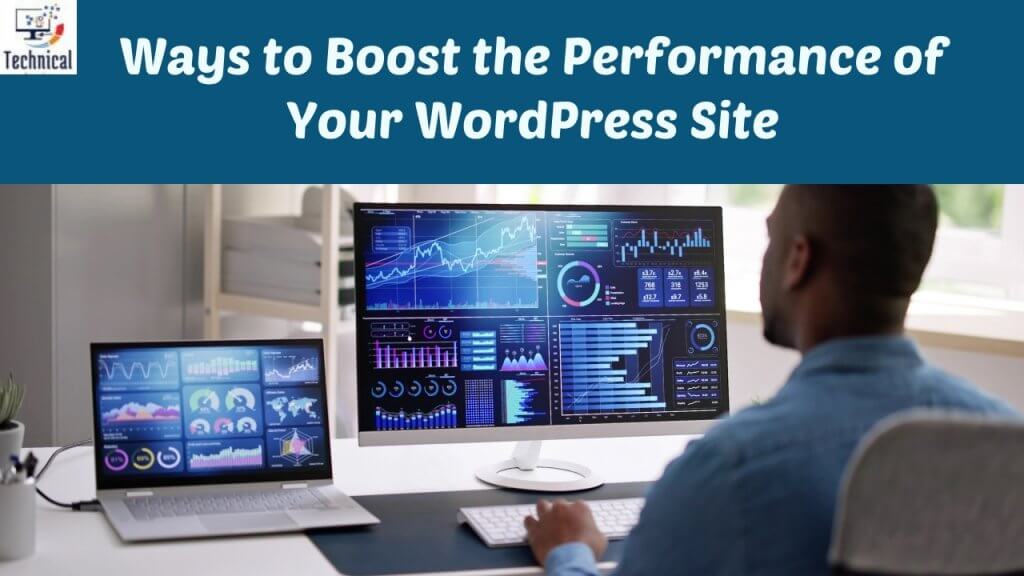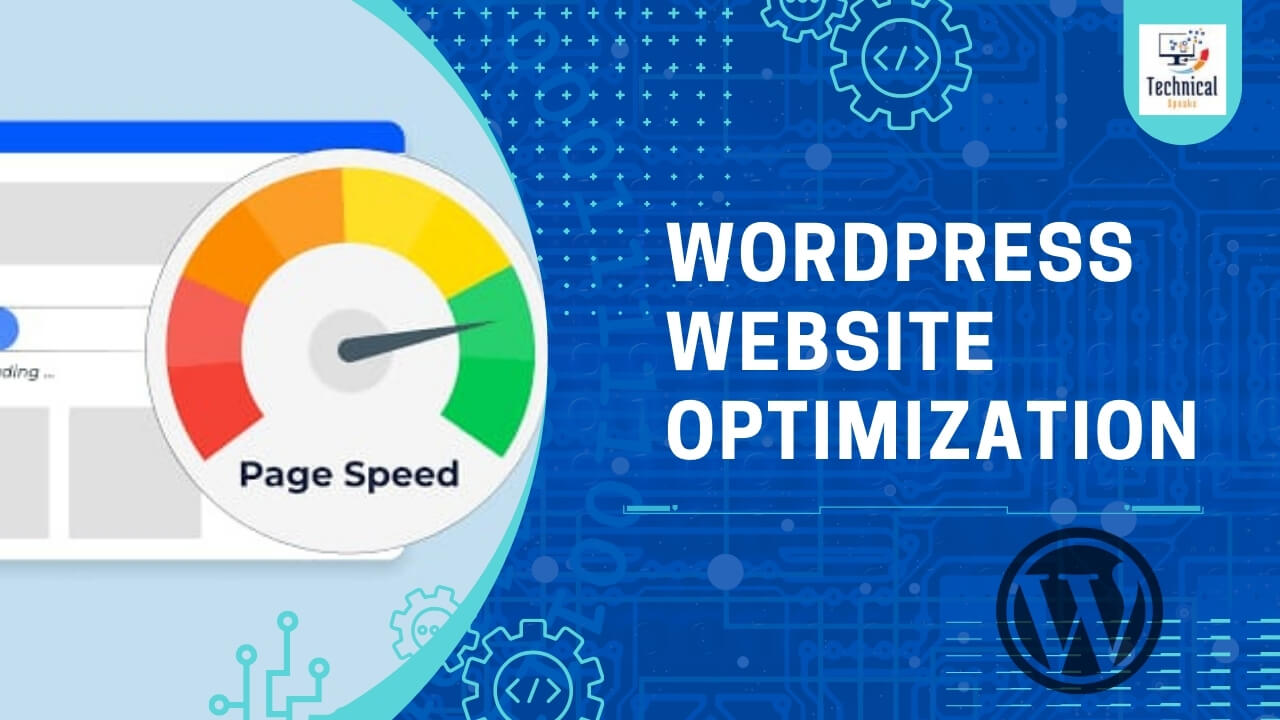In today’s digital landscape, where user expectations and search engine algorithms prioritize speed, the performance of a WordPress website can significantly impact its success. Slow Loading sites not only frustrate visitors but also risk losing potential customers and diminishing search engine rankings. Recognizing the importance of fast loading times is crucial for developers and business owners aiming to optimize their WordPress sites.
The significance of website speed extends beyond user experience. It directly influences various aspects of online presence and business performance, especially when aiming to optimize landing pages. First and foremost, user experience is paramount. A slow website can lead to increased bounce rates, negatively affecting user engagement and conversions. Moreover, from an SEO perspective, site speed is a critical ranking factor. Search engines like Google prioritize faster websites, often rewarding them with higher visibility in search results. The efforts to optimize landing pages must include considerations for website speed to maximize effectiveness and user satisfaction.
To address speed issues on WordPress sites, several optimization techniques can be implemented. Optimizing images by compressing them without compromising quality reduces page size and loading times. Caching plugins, such as WP Super Cache or W3 Total Cache, generate static HTML versions of pages to minimize server processing for recurring visitors. Additionally, minimizing HTTP requests by combining and reducing file sizes of scripts and stylesheets can streamline loading processes.
Choosing lightweight themes and regularly optimizing the database by removing unnecessary data and spam also contribute to faster load times. Enabling GZIP compression reduces file sizes transmitted between the server and browser, further enhancing performance. Content Delivery Networks (CDNs) distribute cached content globally, reducing latency and improving load times for users across different locations.
Consistent updates of WordPress core, themes, and plugins are essential to leverage performance improvements and security enhancements. By adopting these strategies and monitoring performance metrics, WordPress site owners can ensure optimal speed and responsiveness. Ultimately, prioritizing website speed not only enhances user satisfaction and engagement but also drives better search engine visibility and business outcomes in the competitive online landscape.
What is WordPress site speed?
WordPress site speed refers to how quickly a WordPressbased website loads and responds to user interactions. It is a measure of the time it takes for a web page to fully display its content after a user requests it. Site speed is influenced by various factors including server performance, website design, content optimization, and network conditions.
Key aspects that contribute to WordPress site speed include:
1. Server Performance: The quality and capacity of the hosting server have a significant impact on site speed. A well configured server with sufficient resources (CPU, memory, bandwidth) can deliver web pages faster.
2. Website Design and Themes: The choice of WordPress theme and design elements (such as images, scripts, and stylesheets) can affect loading times. Lightweight and welloptimized themes tend to load faster compared to bulky, featurerich themes.
3. Content Optimization: Optimizing images, videos, and other media files reduces their file size without compromising quality. This reduces the amount of data that needs to be transferred, leading to faster loading times.
4. Caching: Caching plugins generate static HTML files of web pages, which can be served to users without the need to generate them dynamically from the server each time. This reduces server load and improves response times.
5. Minimizing HTTP Requests: Each element on a web page (images, stylesheets, scripts) requires a separate HTTP request. Minimizing the number of requests by combining files or using asynchronous loading can speed up page rendering.
6. Database Optimization: Regularly cleaning up the WordPress database by removing unnecessary data like revisions, spam comments, and expired transient options can improve site performance.
7. Compression: GZIP compression reduces the size of files transmitted between the server and browser, leading to faster loading times.
8. Content Delivery Network (CDN): CDNs store cached versions of website content on multiple servers worldwide. When a user accesses the site, content is delivered from the nearest server, reducing latency and improving loading times, especially for global audiences.
Optimizing WordPress site speed is essential for providing a positive user experience, improving search engine rankings, and maximizing conversion rates. By implementing best practices for performance optimization and regularly monitoring site speed metrics, website owners can ensure that their WordPress sites load quickly and efficiently across various devices and network conditions.
Enhancing the Speed of Your WordPress Website: Why It Matters
In today’s online world, having a fast loading WordPress website is really important. When your site loads quickly, it helps keep visitors interested, makes Google like your site more, and increases the chances that people will do what you want them to do on your site, like making a purchase or signing up. People expect websites to load fast, and search engines like Google prefer fast sites too. Learning how to speed up your WordPress site can give you an edge in the competitive online world.
1. User Experience: A fast website provides a better user experience. Visitors are more likely to stay and engage with your site if it loads quickly. Studies show that users tend to abandon websites that take more than a few seconds to load. By optimizing your site speed, you improve user satisfaction and increase the likelihood of conversions.
2. SEO Ranking: Site speed is a ranking factor in Google’s algorithm, Faster websites tend to rank higher in search engine results pages (SERPs). Google and other search engines prioritize user experience, and site speed is a key metric they use to evaluate this. Improving your site’s speed can positively impact your SEO efforts and help drive more organic traffic.
3. Conversion Rates: A faster website generally leads to higher conversion rates. Whether your goal is to sell products, generate leads, or encourage signups, a quicker site speed can significantly boost your conversion rates. Slow Loading pages can deter users from completing desired actions, impacting your business’s bottom line.
4. Mobile Friendliness: Mobile users, who make up a substantial portion of internet traffic, especially value fastloading websites. Mobile connections can be less reliable or slower than desktop connections, making speed optimization crucial for retaining mobile users. Google’s mobilefirst indexing also emphasizes the importance of mobile speed.
5. Reduced Bounce Rates: A slow website often results in higher bounce rates, where visitors leave shortly after arriving. By speeding up your site, you can reduce bounce rates and keep users engaged for longer periods, which can positively impact your site’s overall performance and relevance.
6. Improved Server Resources: Optimizing your site speed can also reduce the strain on your server resources. This can lead to cost savings by potentially allowing you to use smaller, more costeffective hosting plans or reducing the need for additional server capacity.
7. Competitive Advantage: In a competitive online landscape, every advantage counts. A faster website can differentiate your brand from competitors, attracting more visitors and improving your brand’s perception.
To accelerate your WordPress site speed, consider implementing various optimization techniques such as:
Caching: Utilize caching plugins to generate static HTML pages of your site, reducing the need for dynamic content generation with each page request.
Image Optimization: Compress and resize images to reduce their file sizes without sacrificing quality.
Minification: Minify CSS, JavaScript, and HTML files to remove unnecessary characters, reducing file sizes.
Content Delivery Networks (CDNs): Distribute your site’s static content across multiple servers worldwide to decrease loading times for users in different geographic locations.
Reduce Plugins: Deactivate or remove unnecessary plugins that can slow down your site.
Optimize Hosting: Choose a reputable hosting provider that offers optimized WordPress hosting packages.
Ways to Boost the Performance of Your WordPress Site

Boosting the performance of your WordPress site is crucial for providing a great user experience and improving SEO rankings. Here are some effective ways to enhance your WordPress site’s performance:
1. Choose a Good Hosting Provider:
Opt for a reputable hosting provider that offers optimized WordPress hosting. Look for providers that offer features like SSD storage, CDN integration, and server level caching.
2. Use a Lightweight Theme:
Select a lightweight and well coded WordPress theme. Avoid themes with excessive features and complex designs that can slow down your site.
3. Optimize Images:
Compress and optimize images before uploading them to WordPress. Use plugins like WP Smush or Imagify to automatically optimize images and reduce file sizes.
4. Implement Caching:
Use a caching plugin to generate static HTML files of your dynamic WordPress site. This reduces server load and speeds up page loading times for returning visitors. Popular caching plugins include WP Rocket, W3 Total Cache, and WP Super Cache.
5. Minify CSS and JavaScript:
Minimize CSS and JavaScript files to reduce their file sizes. Use plugins like Auto optimize or WP Rocket to combine and minify these files, reducing the number of HTTP requests.
6. Enable GZIP Compression:
Enable GZIP compression on your web server to reduce the size of files sent from your server to users’ browsers. This can significantly speed up page loading times.
7. Optimize Database:
Regularly clean up your WordPress database by removing spam comments, post revisions, trashed items, and unused data. Use plugins like WPOptimize or WPSweep to optimize speed of wordpress website
8. Limit External Scripts:
Minimize the use of external scripts and third party services that require additional HTTP requests. Only use essential scripts and services to reduce dependencies.
9. Use a Content Delivery Network (CDN):
Implement a CDN to distribute your site’s static content (images, CSS, JavaScript) across multiple servers worldwide. This reduces latency and speeds up content delivery for users globally.
10. Monitor Performance:
Regularly monitor your site’s performance using tools like Google Page Speed Insights, GTmetrix, or Pingdom. Identify performance bottlenecks and take necessary actions to optimize your site further.



